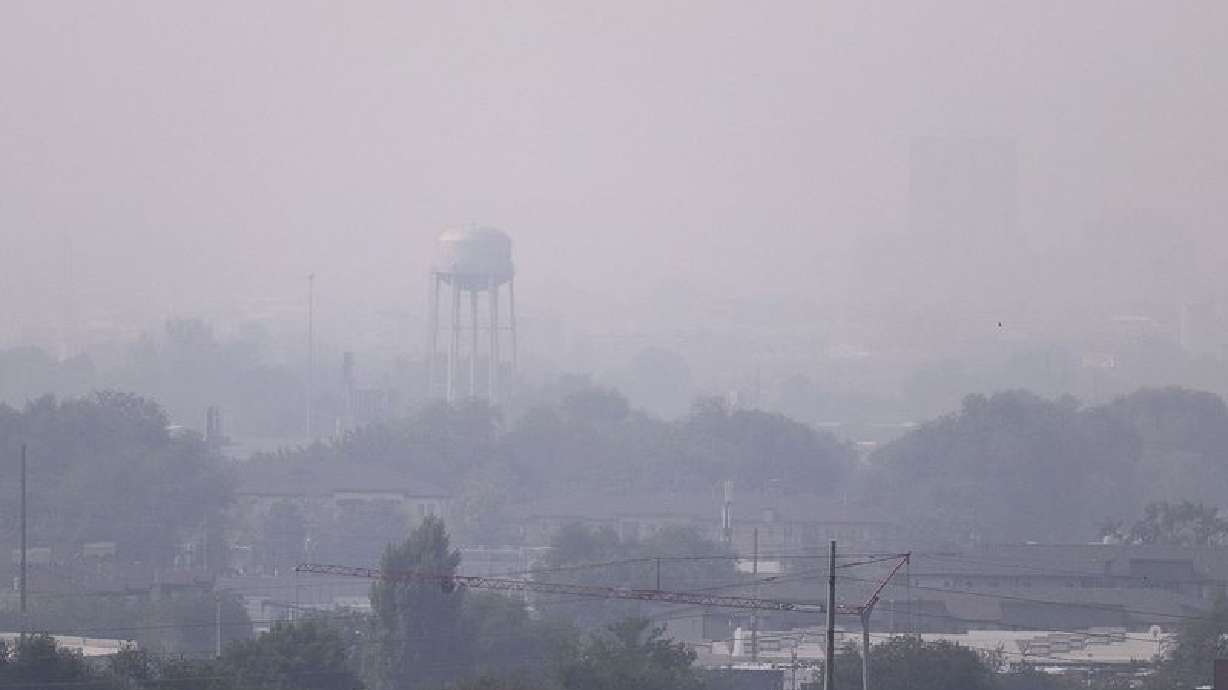Estimated read time: 3-4 minutes
This archived news story is available only for your personal, non-commercial use. Information in the story may be outdated or superseded by additional information. Reading or replaying the story in its archived form does not constitute a republication of the story.
SALT LAKE CITY — On a single day in August 2020, 43 million people in the West were getting their lungs clobbered due to extremely high levels of ozone and fine particulate pollution brought on by exceptional heat and raging wildfires.
A few days later, conditions delivered the longest persisting period of the "co-occurrence" of both ozone and PM2.5 on record — 12 consecutive days — in which 68.5% of the West was blanketed with extreme levels of the harmful pollutants.
What were those terrible days in 2020? Aug. 21 impacting the 43 million people and Aug. 24, when the prolonged period peaked.
There was hardly any place to escape from the pollution in the West, and scientists predict it will not only get worse but improvements made under the more than 50-year-old Clean Air Act are being reversed due to high temperatures and prolific wildfires.
The study funded by the National Oceanic and Atmospheric Administration and led by Washington State University was published in Science Advances.
Wildfire smoke in the West is nothing new, but the intensity of the fires and high temperatures are creating this seasonal pollution anomaly in which there is a "co-occurrence" of both pollutants.
Fine particulate pollution, or PM2.5, is becoming more frequent in the months of July through September — a time when the normally occurring wintertime pollutant historically hasn't cracked the charts.
The study shows that wildfire smoke, which accelerates the formation of ozone, contributed up to 50% of PM2.5 in recent years.
This is the first research to map the extent of the fine particulate matter extremes in the West as a whole. Previous studies concentrated on urban areas or looked at the East Coast of the United States.
Those PM2.5 extremes have increased significantly in the West from July into September over the last two decades, and part of the region experienced increases greater than 80%.

Researchers found that annual population exposure to the combined episodes of extreme pollution is increasing by approximately 25 million person-days a year — a figure that counts the number of people affected as well as the number of days air pollution impacted them.
The cumulative exposure to both pollutants during 2017, 2018 and 2020 added up to 600 million person-days a year during the wildfire season, the study said.
Exposure to fine particulate pollution and the ground-level ozone constitutes a serious public health problem, researchers say, particularly among at-risk populations.
"Vulnerable communities in the western U.S. that have limited access to health care or other resources needed to cope with poor air quality, have livelihoods that involve higher occupational exposure to polluted outdoor air, or have high rates of prevalence of medical conditions that can exacerbate the effects of air pollution exposure are likely to face increasing threats from such co-stressors," the study warned.
Spiking levels of the pollutants led to numerous mandatory action days issued by the Utah Division of Air Quality, which advised people to limit outdoor activity, time behind the wheel and to take other proper precautions.
Those tiny particles of PM2.5 (a human hair is 70 times larger) are inhaled into the lungs where they cause damage, particularly to vulnerable populations such as the very young, the elderly or those with compromised respiratory systems.
Study co-author Deepti Singh, a Washington State assistant professor, said those high pollution events make it imperative for people to prepare, but it is a tall task due to the breadth of the pollution.
"If there's such a large region that's being affected by this air pollution, it really limits where people can go to escape those conditions," she said in a post on the study. "You could travel a hundred miles and still not find air quality that is any better."










